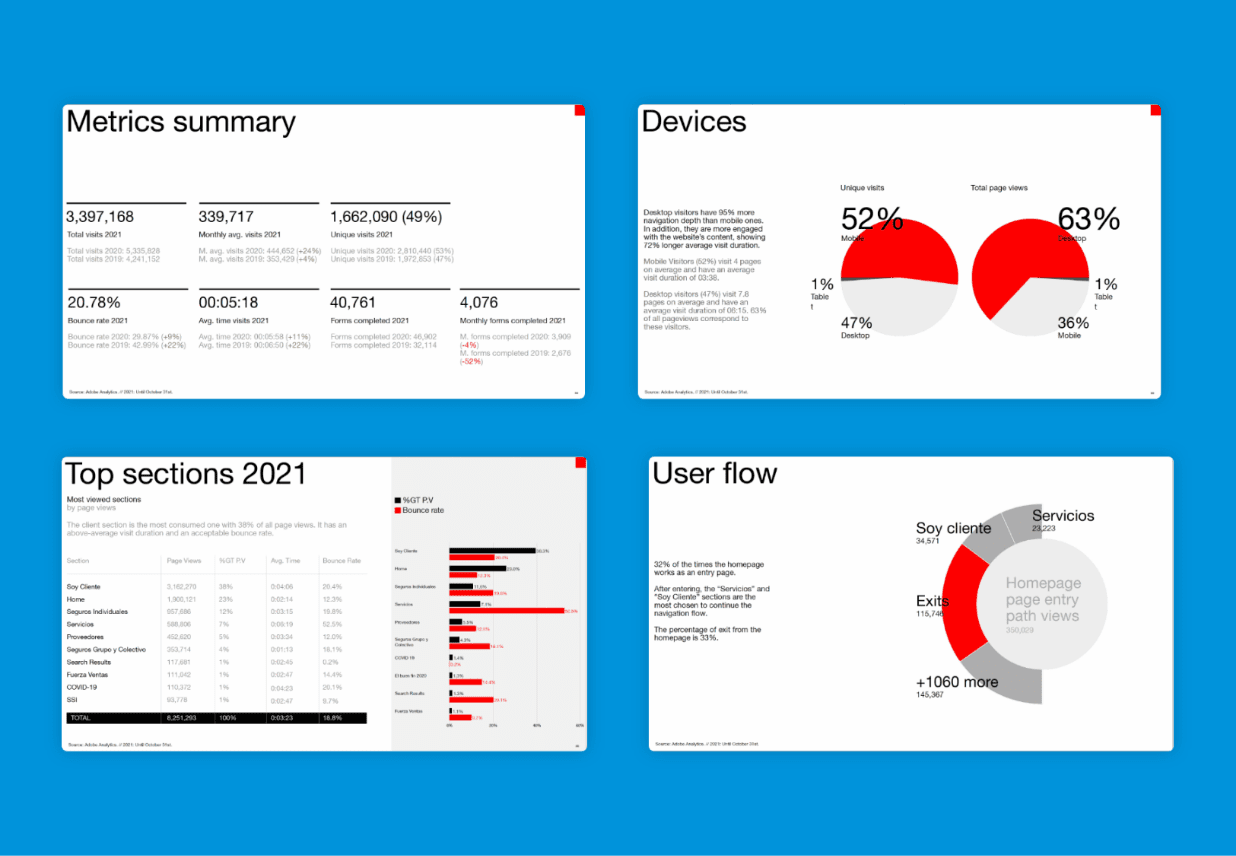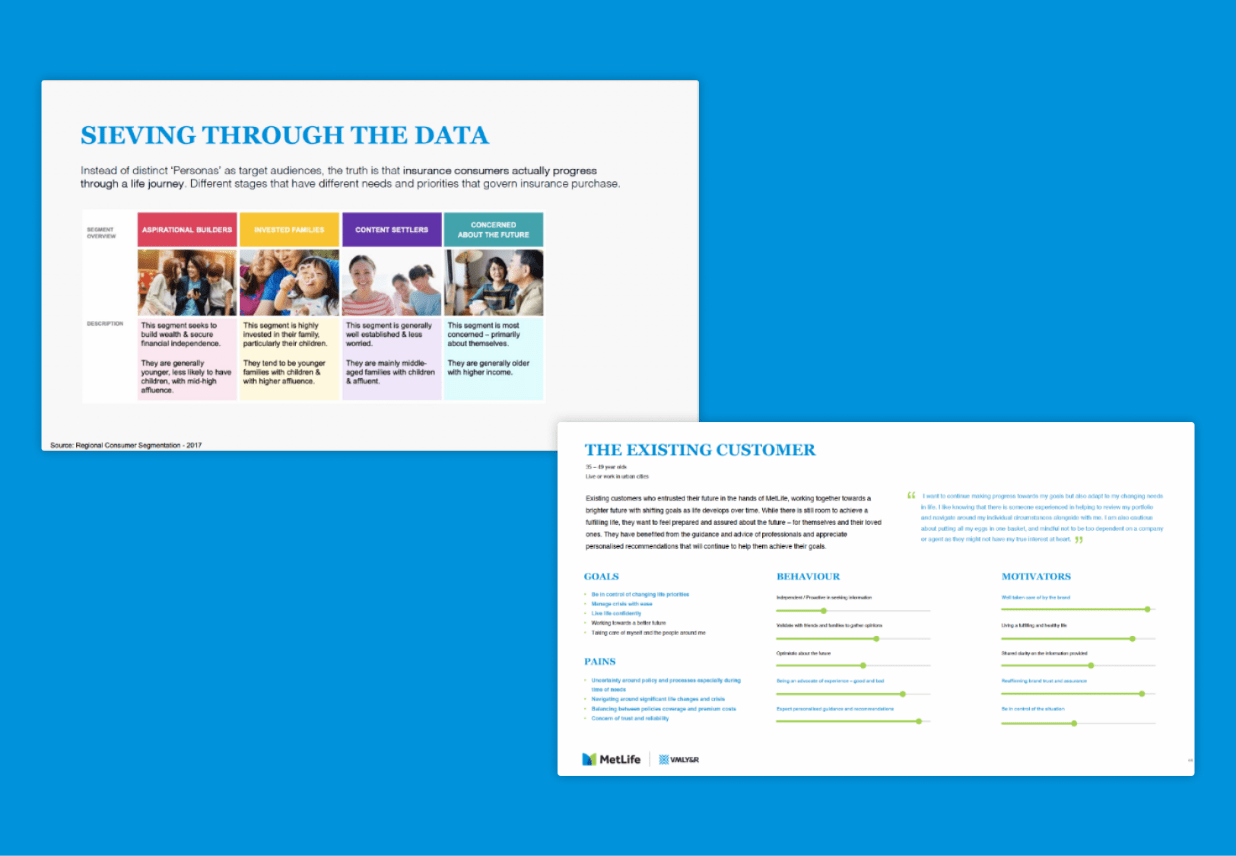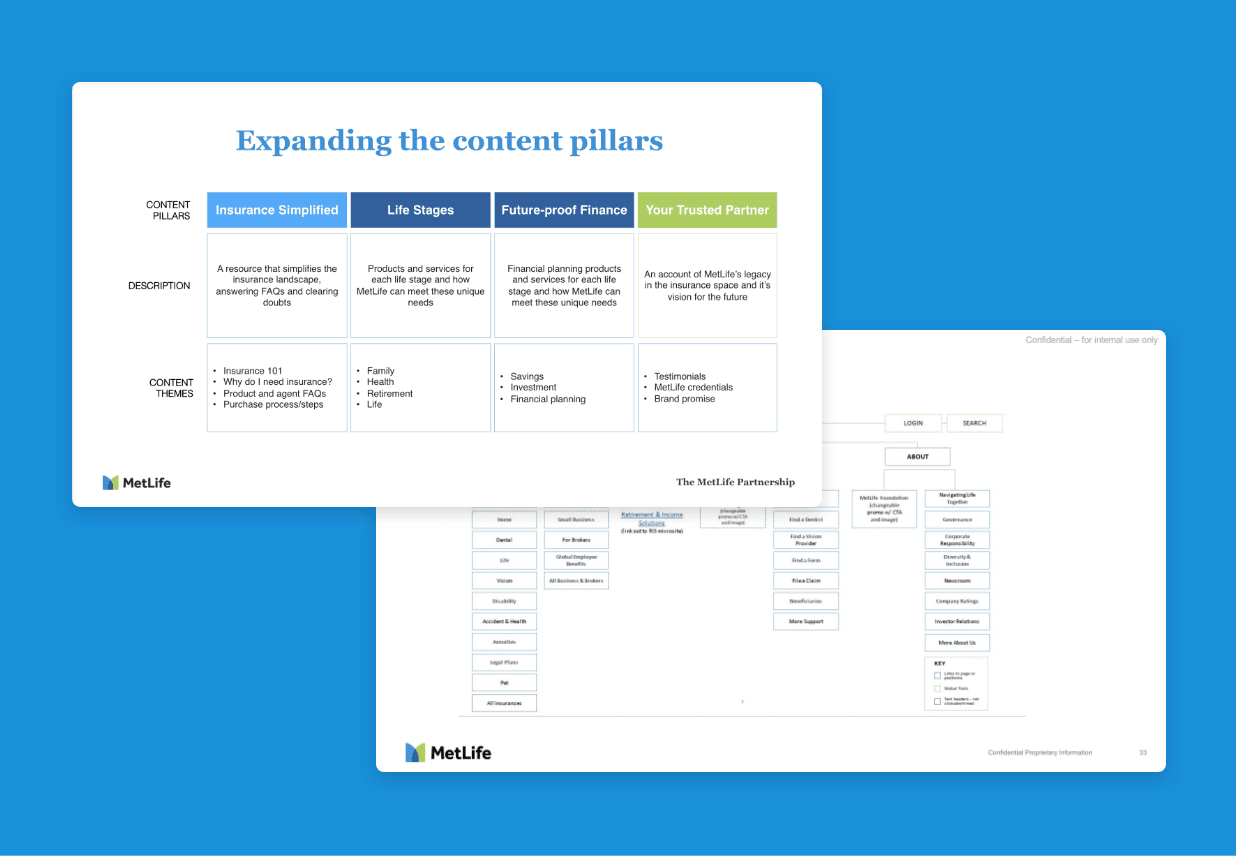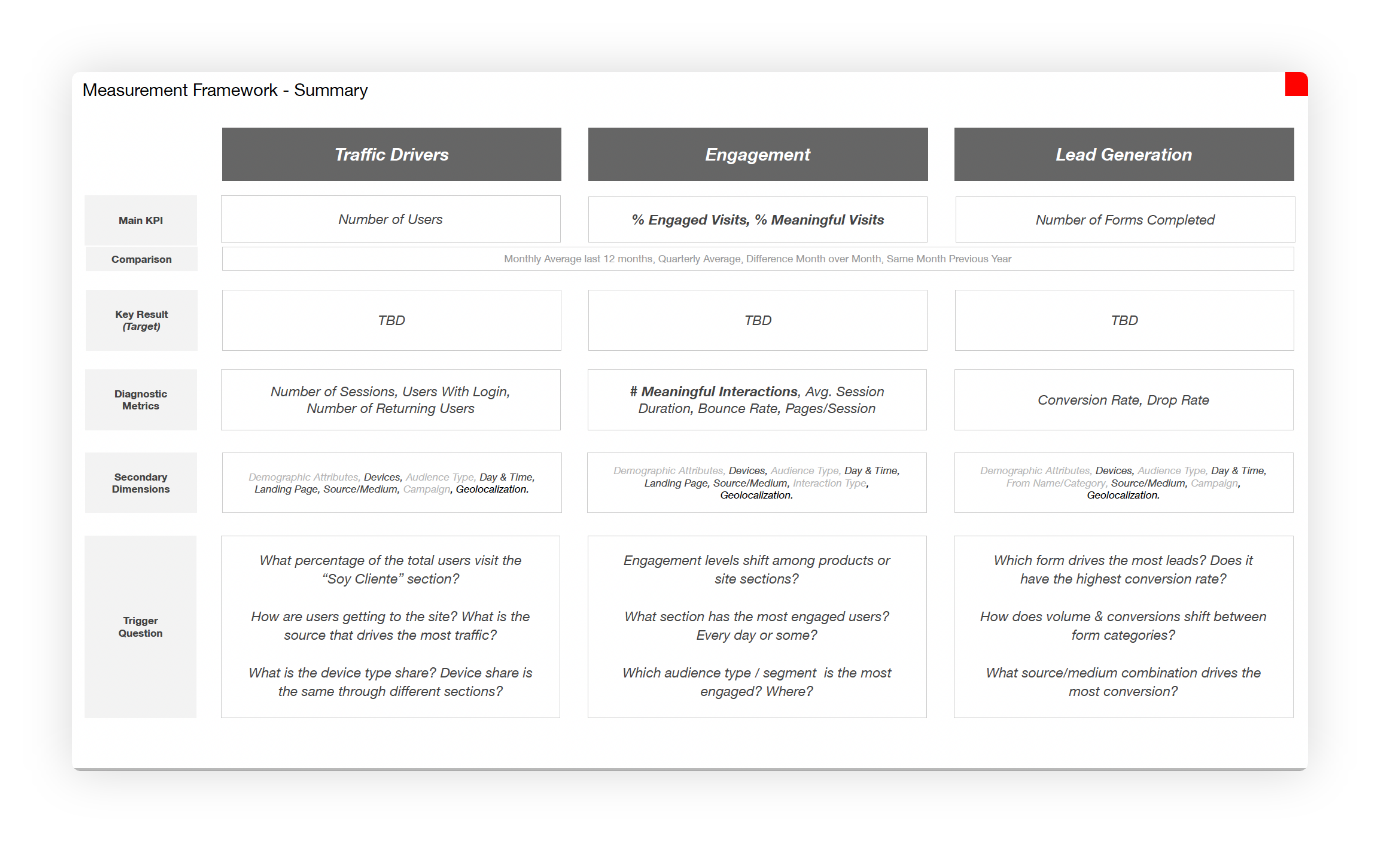PROCESS
Phase 2: Discover Your Vision and Define Your Strategy
In this phase of your website revamp, you’ll align stakeholders on the vision and strategy of your website. You’ll make sure your website engages customers and adds value to your business. Read on to gain an overview of the work, considerations, and deliverables during this important phase.
What Happens in the Discover & Define Phase?
The Discover & Define phase includes four important steps:
Discover Your Opportunities
Understand your audiences
Define Your Content Strategy and Create Your Sitemap
Define Your KPIs and Roadmap
Discover & Define Overview
Discover Your Opportunities
Discover how you can make your content more relevant to your audiences and help them more easily find what they need. Learn how you can drive traffic to your site and convert leads.
Begin by auditing your website to understand its current state. Then take an objective look at how your website stacks up against those of your competitors—and against best-in-class websites in other industries.
Gather data on the clicks and bounce rates for each page. Which pages—and which pieces of content—engage your customers? Where do customers drop off?
This research and analysis will spark ideas about how you can restructure your website, add new content types and topics, and improve your website’s design to engage your audiences and convert leads into sales.
Remember to gather data on your website’s current performance to set a baseline for your future website analytics. Capturing data before you make changes to your site enables you to measure your progress.
Ask and answer collaboratively:
![]()
- Which business objectives should our website achieve (motivate audiences to sign up, download information, or call an advisor; improve brand awareness and inspire trust, etc.)?
- Which insights do analytics give us about how visitors behave on our current website?
- What data does our team need to analyze (website traffic, pathing, drop off rates, etc.)?
- How does our website fit into our channel strategy? Why and when do people choose to use our website rather than our other channels?
- Where does our current website meet or fall short of our objectives?
- Where exactly do customers drop off the site? Where do they seek human contact instead? Why?
- Does our photography and imagery fit with our local brand?
- What can we learn from competitors and best-in-class websites?
- Where do they simplify when we tend to complicate? How does our site’s navigation, functionality, and content compare?
- Which opportunities will we prioritize to improve the foundation of our website (our short-term goals) and to optimize our website (our long-term goals)?
Understand Your Audiences
Learn more about journey Mapping
At this stage, you’re shifting your focus to gaining customer insights and understanding how they’ll impact your website objective.
Based on the business goals for your website, choose which audiences you will prioritize. Then define their needs and goals. Decide how your website will guide each audience through a journey to meet their needs and reach their goals—and to reach the goals of your business.
Use your insights to establish a vision for the future of your site and design principles that will help your team make appropriate decisions.
Ask and answer collaboratively:
![]()
- What insights into our customers do we already have?
- Can additional research help us better understand the target audiences (prospects, customers, agents, others) for our website?
- How can our website meet each audience’s needs and help them reach their goals? (I.e. convert prospects into customers by generating leads).
- What does the journey for each persona look like?
- Where are the personas coming from, what are they coming to our website for, and how quickly do they get what they want?
- What are their pain points?
- For each page of our website, what is our business’ intention, and how does it compare to the persona’s intention? How can we make these interests align?
- Does that content speak to that persona at the right moment? Where were they before they landed on this page, and where do they want to go from here?
- What is the role of the website in the customer’s journey?
Define Your Content Strategy and Create Your Sitemap
Many teams make the mistake of forgetting to define a content strategy. In fact, your content strategy is essential: it empowers you to create the right content to meet customers’ needs and achieve your business goals.
Your content strategy will rest on a foundation of content pillars. Content pillars are the most important themes for your content to communicate on your website. Choose your content pillars by synthesizing insights from your:
|
|
Your content pillars show you which themes are most meaningful to your target audiences. They help you understand which content to create and where in their journey it will be most useful to customers.
With the framework of your content pillars in place, you can create your sitemap. Fundamental to your content strategy, your sitemap shows designers how to organize the webpages across your website. As you build your sitemap, remember that your website should provide comprehensive, accurate information to your target audiences at the points when they need your insights to solve their problems. Continue to evolve your sitemap as you conduct research and answer the questions below.
With our new design system, MetLife seeks to help customers find solutions, rather than simply showcasing our products. So before you build your website’s navigation, think through the new journeys your customers and prospects will take as you guide them to relevant solutions.
Ask and answer collaboratively:
![]()
- What content themes should exist across our site in order to meet the goals of our business and our target audiences?
- Is the placement of our content consistent across the site pages, and does it help our users easily find what they need?
- What copy needs to be rewritten to align with users’ needs at the right locations?
- Who oversees governance for the content of our website?
- Does our sitemap meet customer expectations?
Define Your KPIs and create a Roadmap for your MVP
Now that you’ve identified opportunities to improve your website and defined your target audiences, it’s time to establish KPIs that will reflect how well your website meets the needs of your business and audiences.
It’s also time to decide which pages your team will prioritize for the minimum viable product (MVP) of your revamped website. These decisions will affect the sitemap of your MVP. With your sitemap, you can create a roadmap for how your team will create and launch your MVP.
By the time you complete the Discover & Define phase of your website revamp process, be sure you’ve established your design principles, created a sitemap, and decided on a roadmap for working towards your MVP.
Document your vision, strategy, and metrics for success to help your design partners build a website that achieves the goals you’ve defined.
Ask and answer collaboratively:
![]()
- What KPIs will we use to measure success?
- What will we need to program into the measurement dashboard before launch?
- Which moments that matter will we prioritize for our MVP?
- Which pages will we (re)design first?
- What will our timeline for launch be?
Website Revamp Deliverables
MetLife website redesign teams are showing us what good looks like. Use these examples to understand each type of deliverable and set expectations with your partners for the quality of work in the Discover & Design phase.
PROCESS
Next: Design Your Website
Redesigning your website means more than a simple re-skin. The design process helps you and your team pinpoint better ways to achieve your business goals—from generating leads, to improving understanding of your products, to increasing brand awareness and trust.



